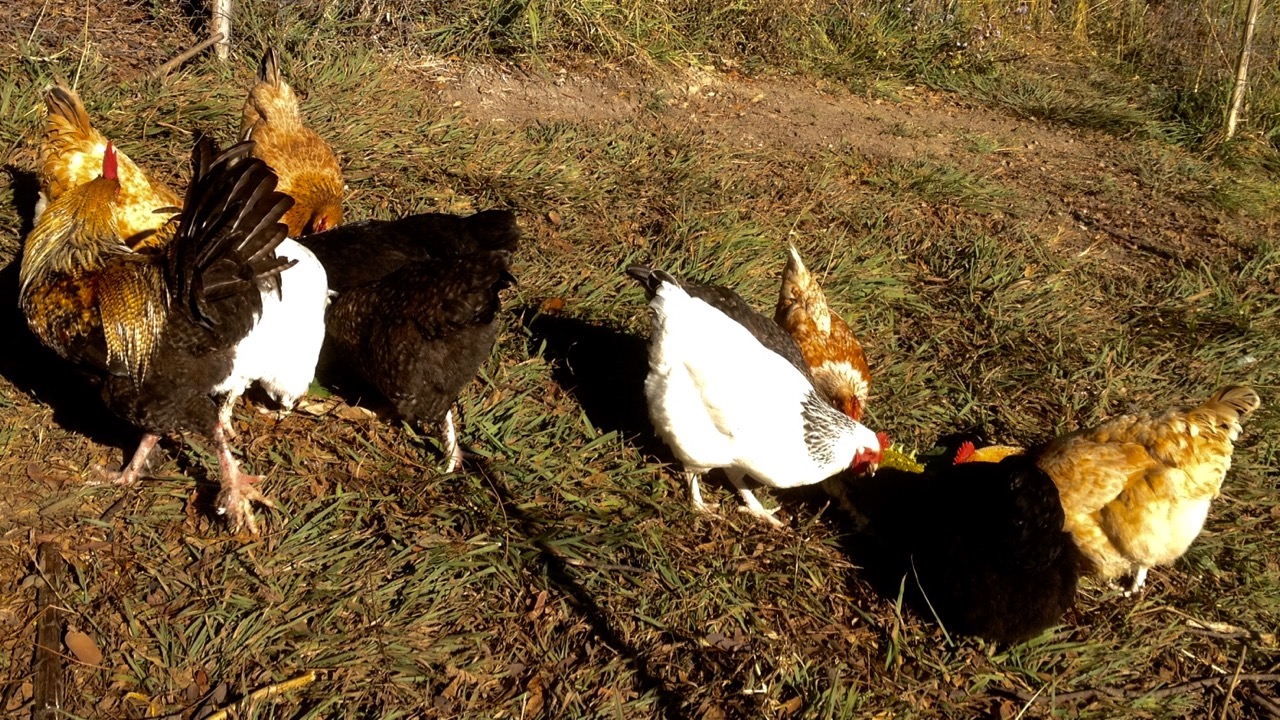In your home flock you can choose from a wide variety of chicken breeds. The easiest to buy are the standard layer types, but if as you probably aren’t keeping them just for maximum egg production, you might find heritage breed chickens are more attractive and interesting option.
Heritage breed chickens; building a flock
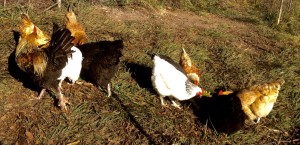
We inherited a small flock of old hens when we bought our place just over a year ago. They were well beyond peak laying age, but still produced a half dozen or so eggs per week as the days lengthened through Spring. They were a mixed bunch, a couple of White Sussex, and a couple each of the standard red and black laying breeds we have locally.
Then four of our old hens went broody in Spring. The natural breeding process for a chicken is to lay an egg every day or so until they have a clutch, then sit for 20 days to hatch them. A broody hen doesn’t do much but sit (even on an imaginary clutch of eggs). They lose condition and they don’t lay any more eggs, so it’s best to break the broodyness if you can.
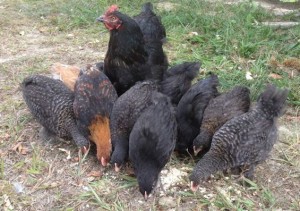
But as my Mum pointed out, a single broody hen can be an asset, so last year I bought a dozen fertile eggs from local friends, with the aim of rejuvenating our flock. Fortunately these friends breed Marans heritage breed chickens, so it was also a way to move to a more interesting flock.
The Marans breed is originally from Western France. They have a variety of plumage types, are good natured, hardy for foraging, and their special power is that they lay very brown eggs.
Of our dozen fertile eggs, ten hatched, and we ended up with five male and five female chicks. After attrition and culling we have settled to just three surviving Marans hens and one rooster, plus 7 old hens.
Heritage breed chickens can be slow to come to lay
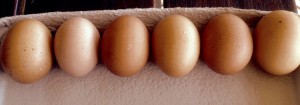
At what age do chickens start laying? If you read web forums you might get the idea that your chicks will lay at 12 weeks. Other sites say that after 20 weeks is more realistic. My Marans pullets took 9 months to begin laying. The delay may be due to some aspect of my rearing of them, but the roosters were also slow to mature too, only starting to crow at 8 months, so it seems that it’s true that heritage breeds can be slow to mature and lay. I was really beginning to wonder if there is such a thing as a pullet that doesn’t lay.
But then, with the longer days, the brown eggs began to appear, first one a day, then more, and then the old hens began to lay too. Today we finally had a 5 egg day!
I wonder also whether the time of hatching makes a difference to time of laying. Hens that hatch in Spring aren’t mature until Autumn, and then the short days are unfavourable for laying. Aiming to raise a brood in late Summer might be more productive.
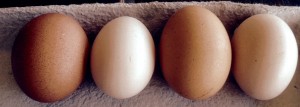
Another surprise with the Marans pullets is that they didn’t really start with laying small ‘pullets eggs’. Their eggs are actually quite large compared to the standard layers.
Managing the flock further
I expect that my prize broody hen will do her thing again this year, and I think I will collect a dozen eggs again for her. Seven young hens would be a good number I think, and I can cull the roosters for eating. The marans are perfect for selective breeding, as their eggs are easy to tell, and you can even recognise individual hens from the colour and speckles on their eggs. As my rooster is also Marans, and the three hens are different plumage types, the offspring will be interesting to watch.

